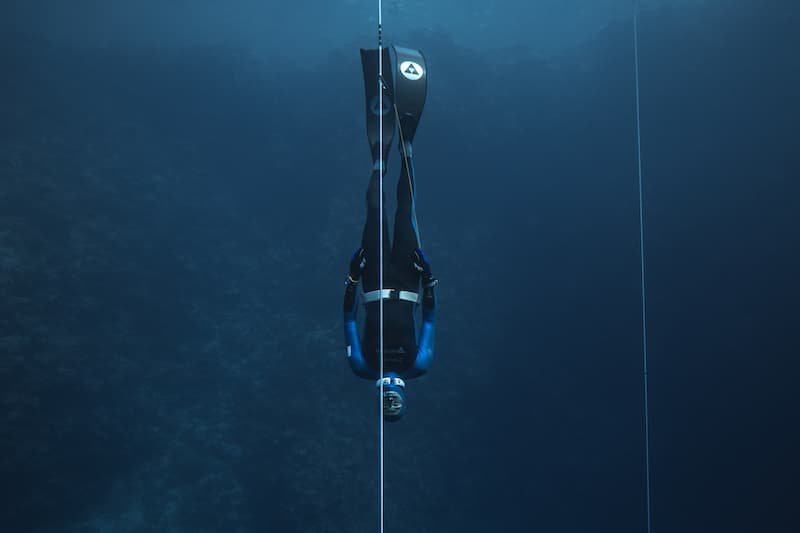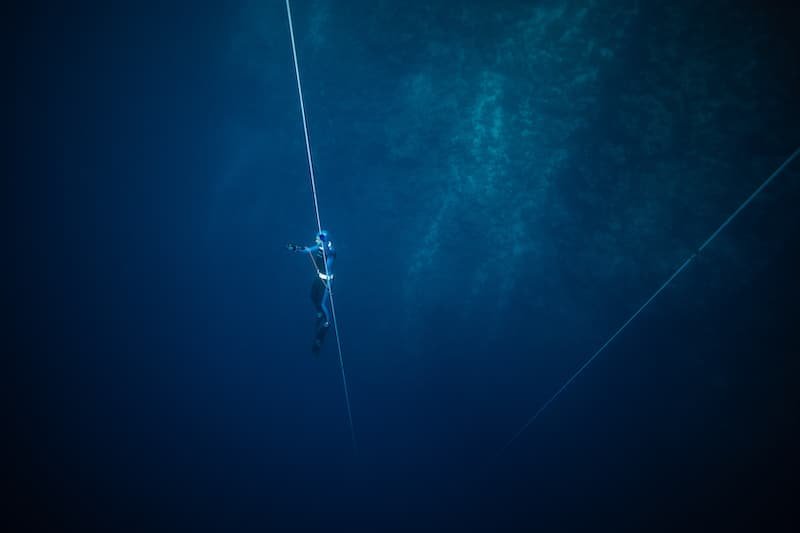As individuals engaged in freediving, it becomes imperative for us to delve into the optimal utilization of our body's oxygen resources. Understanding the intricacies of the mammalian dive response emerges as a fundamental key in this pursuit. By comprehending and mastering this physiological mechanism, freedivers can unlock essential insights into enhancing their ability to efficiently manage and make the most of the available oxygen during underwater excursions. In essence, the mastery of the mammalian dive response stands as a crucial element in our journey towards becoming proficient freedivers, enabling us to navigate the depths with a heightened awareness of our body's oxygen dynamics.
For those embarking on the journey of freediving, understanding that progression in this sport mirrors other pursuits is essential. The mammalian dive response, observed in marine animals and humans alike, involves a substantial reduction in heart rate when submerged, as opposed to breathing at the surface. This physiological reaction serves to preserve oxygen consumption during submersion or breath-holding, especially in cold water. It plays a pivotal role in maximizing underwater excursions, characterized by three key changes: noticeable bradycardia, selective peripheral vasoconstriction, and increased blood flow to the viscera.
In all air-breathing vertebrates, including humans, freediving triggers the mammalian response. This encompasses peripheral vasoconstriction, linked to initial hypertension due to sympathetic activity, and vagally induced bradycardia resulting in decreased cardiac output. The circulatory alterations are further accentuated by facial cooling and/or hypoxia. Additionally, studies have demonstrated that apnea, a characteristic of freediving, leads to increased peripheral vascular resistance, accompanied by significant bradycardia and decreased cardiac output.

Bradycardia manifests as a reflex response during freediving. Nevertheless, observations indicate that the elevation in blood pressure precedes the deceleration of heart rate. This suggests that baroreflex induction and chemoreceptor stimulation, stemming from hypoxia in the later phase of breath-holding, may contribute to the development of bradycardia. The diving reaction is theorized to prioritize the transportation of blood and lung oxygen reserves to the heart and brain. Notably, the impact of breath-hold dives on increasing the hemoglobin content of circulating blood through splenic contraction, occurring early in the diving-response cascade, garnered significant attention in recent years.
In an article published in the Journal of Physiology, it is stated that one study reported elevated hemoglobin levels in breath-hold divers compared to non-divers. This suggests that the observed 24% increase in erythropoietin levels may lead to a prolonged elevation of hemoglobin levels in breath-hold divers. Another investigation found that top breath-hold divers exhibited average hemoglobin concentrations and total hemoglobin mass, as reported in the Journal of Physiology. The higher hemoglobin levels in breath-hold divers may parallel those observed in individuals with obstructive sleep apnea, where blood changes correlate with the severity of hypoxia during sleep, despite noticeable quantitative differences in hypoxia exposure between the two groups.

In my freediving instruction, I elaborate on the induction of the mammalian dive response and the swift activation triggered by the brain when it senses the necessity to transition the body into a safety mode. To vividly illustrate the rapid reduction in heart rate, I engage in practices such as fully exhaling and breath-holding while employing an oxygen saturation device. Additionally, the demonstration involves submerging my face in a bowl of cold water, effectively inducing bradycardia within a matter of seconds.
The mammalian dive response exhibits considerable variability in humans during both rest and exercise. This variability is systematically influenced by factors such as age and the presence or absence of diving experience. Notably, diving bradycardia is most pronounced in children aged 4–12 months, potentially serving as a survival mechanism during hypoxic episodes proximal to birth. As individuals age, the diving response weakens, and habitual breath-hold divers tend to exhibit more marked responses compared to non-divers. Furthermore, the diving response is notably accentuated during exercise in contrast to periods of rest.
The co-occurrence of bradycardia and cardiac arrhythmias observed in the human diving response is attributed to a combination of vagal inhibition of atrioventricular conduction and sympathetically induced augmentation of automaticity in latent pacemakers, allowing for ectopic beats. Mastering the mammalian dive response is emphasized as a prerequisite for those seeking to prolong breath-holding durations.